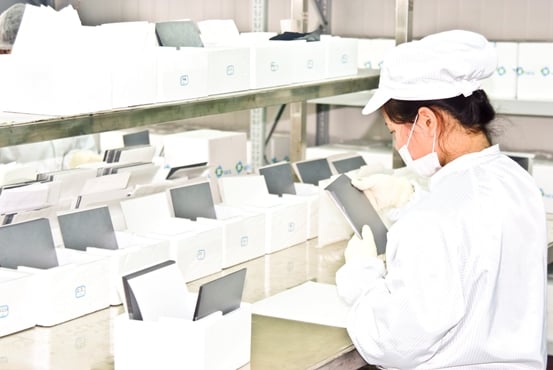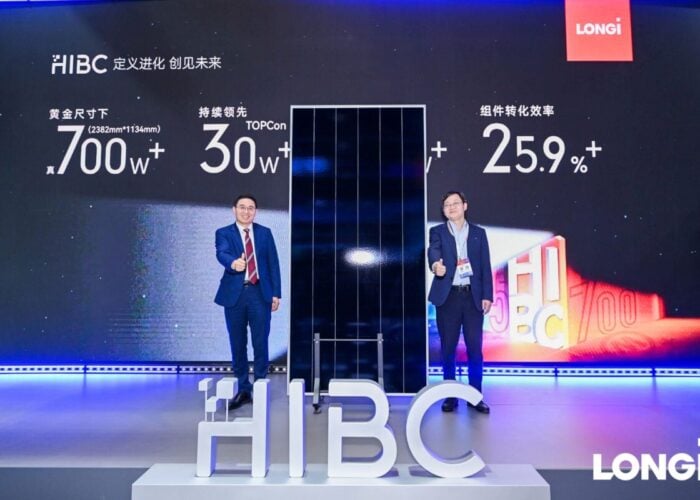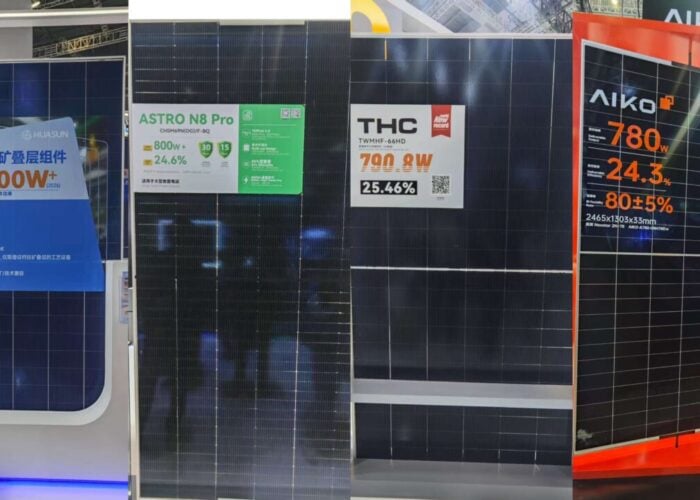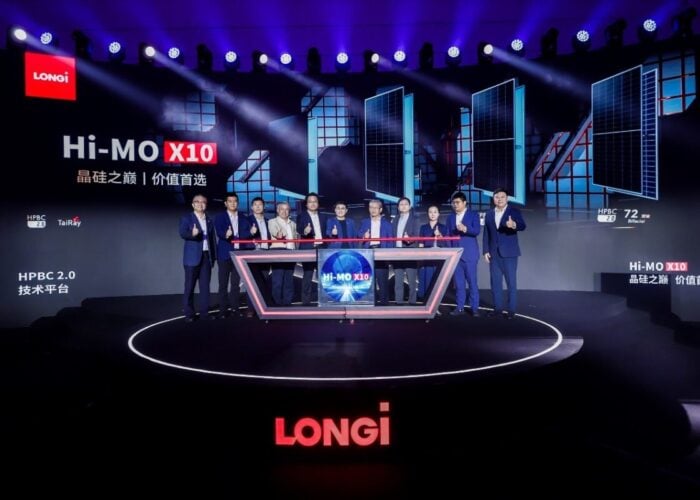
Below is the content from yesterday’s PV Tech Premium briefing, a weekly email exclusive to PV Tech Premium subscribers which provides them with insider insight and analysis of the week’s biggest stories affecting the solar industry.
You can receive the PV Tech Premium Briefing every Friday, delivered straight to your inbox, while also enjoying other PV Tech Premium benefits such as regular, exclusive content on PV Tech, an annual subscription to our downstream solar journal PV Tech Power, exclusive webinars and discounts on Solar Media events.
Unlock unlimited access for 12 whole months of distinctive global analysis
Photovoltaics International is now included.
- Regular insight and analysis of the industry’s biggest developments
- In-depth interviews with the industry’s leading figures
- Unlimited digital access to the PV Tech Power journal catalogue
- Unlimited digital access to the Photovoltaics International journal catalogue
- Access to more than 1,000 technical papers
- Discounts on Solar Media’s portfolio of events, in-person and virtual
A special discount code has been created to coincide with the free publication of this Premium Briefing. You can get 33% off your first year as a PV Tech Premium subscriber – reducing the cost to just US$166.83 – by using the code ‘BRIEFING33’ at the checkout. Click ‘SUBSCRIBE’ to begin your PV Tech Premium subscription today.
Story tips here | PV Tech Premium| Events & webinars | SML Podcast
We teased in last week’s briefing that polysilicon prices were causing come consternation in solar manufacturing boardrooms, and JinkoSolar’s Dany Qian later inferred the industry was lurching towards a crisis. Polysilicon spot pricing has remained relatively stable week on week – PV InfoLink has a slight increase in the highest available price for mono-grade poly to RMB150/kg, ahead of last week’s high of RMB145 – however the average spot price has remained the same at RMB137.
In a webinar with Roth Capital yesterday, PV InfoLink’s Corinne Lin suggested that polysilicon pricing would continue to remain high, and possibly peaking somewhere towards RMB160/kg in July or August, before falling as more capacity comes onstream. There could, however, be a more protracted climbdown in pricing, with some in the industry believing it won’t be until the second half of next year before prices normalise.
All eyes on China’s Q3
The reasoning behind the sharp increase in poly pricing since the middle of last year has been wafer and cell providers snatching at supply in anticipation of a huge year for module demand, courtesy of an anticipated ramp in utility-scale deployment in China. Corinne Lin added yesterday locking in supply chains and procuring poly now has been so important with most of the industry fearful of what kind of prices they might be met with towards the end of this year when Chinese demand really shifts.
The consequences of this demand, however, is a more accelerated hike in prices that is moving module prices upward now. Module prices are said to be up between 15 – 20% on the start of the year, which has sent IRRs from utility-scale solar from the usual 8% to 6 – 7%. This, in turn, has led many projects in the country to be pushed into Q3 2021 and beyond. Projects aren’t being cancelled – yet – but timelines are beginning to shift. Module demand, and therefore pricing, is expected to remain high in anticipation of that huge surge in demand as China’s utility-scale solar deployment machine kicks into action, but any further delay on the back of reduced returns could yet result in an inventory bubble, even if only in the short term.
LONGi snatches the crown
Polysilicon constraints and pricing fears haven’t scuppered LONGi’s rise to the very top of the solar industry. This week the Solar Module Super League manufacturer confirmed 2020 module shipments of an astonishing 24.53GW, enough to not just take the lead from the former occupier JinkoSolar, but do so by some distance.
And, as we’ve covered this week on PV Tech Premium, LONGi is not resting on its laurels. Detailed plans for capacity expansions included in its year-end report this week and analysed by Mark Osborne here illustrate how LONGi’s ambition for 2021 and beyond is unprecedented for the industry.
The polysilicon reverberation
The old adage goes that if America sneezes, then the world catches a cold. You could now say there’s a similar reverberation with polysilicon supply and solar deployment across the world. We’re led to believe that solar developers, particularly in Europe, feel it’s inevitable that projects will fall by the wayside this year as module prices edge upwards, hitting returns hard. Project IRRs in Europe were already tough to sell – some as low as 4%, as we covered previously – so if a spike in module prices causes a further 1 – 2% slip in returns, banks and other financiers could start to get cold feet before too long.
Coming up this week
Q1 2021 results are coming in thick and fast, and next week is no different, starting on Monday with Tesla. Storage numbers are expected to be strong – low availability has led to price increases – and we await some commentary around the company’s decision this week to only sell rooftop solar as an integrated product alongside Powerwall batteries. We’ll have all the coverage and analysis as they drop.
We sit down with TE Connectivity next Wednesday (28 April – 4:00pm CET / 3:00pm BST / 10:00am EST) to profile how PV connector technology continues to mature. Registration details can be found here.







